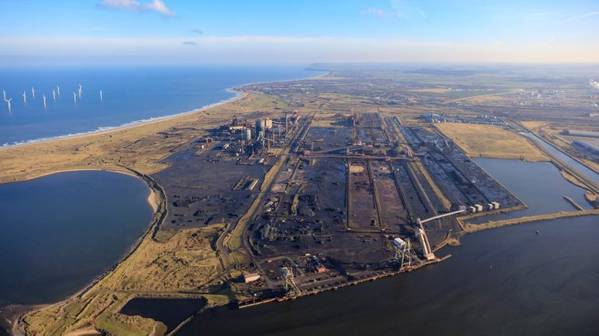
Oil major BP said Thursday it was working to develop the UK’s largest blue hydrogen production facility, targeting 1GW of hydrogen production by 2030.
The proposed development, H2Teesside, would capture and send for storage up to two million tonnes of carbon dioxide (CO₂) per year, equivalent to capturing the emissions from the heating of one million UK households.
"With close proximity to North Sea storage sites, pipe corridors, and existing operational hydrogen storage and distribution capabilities, the area is uniquely placed for H2Teesside to help lead a low carbon transformation, supporting jobs, regeneration and the revitalization of the surrounding area. Industries in Teesside account for over 5% of the UK’s industrial emissions and the region is home to five of the country’s top 25 emitters," BP said.
Dev Sanyal, BP’s executive vice president of gas and low carbon energy said: "Clean hydrogen is an essential complement to electrification on the path to net zero. Blue hydrogen, integrated with carbon capture and storage, can provide the scale and reliability needed by industrial processes. It can also play an essential role in decarbonizing hard-to-electrify industries and driving down the cost of the energy transition"
"H2Teesside, together with NZT and NEP, has the potential to transform the area into one of the first carbon-neutral clusters in the UK, supporting thousands of jobs and enabling the UK’s Ten Point Plan.”
UK Energy Minister Anne-Marie Trevelyan, said: “Clean hydrogen has huge potential to help us fully decarbonize across the UK and it is great to see bp exploring its full potential on Teesside.”
Blue hydrogen is produced by converting natural gas into hydrogen and CO₂, which is then captured and permanently stored. H2Teesside would be integrated with the region’s already-planned Net Zero Teesside (NZT) and Northern Endurance Partnership (NEP) carbon capture use and storage (CCUS) projects, both of which are led by BP as operator.
The project would be located in Teesside in north-east England and, with a final investment decision (FID) in early 2024, could begin production in 2027 or earlier.
Stages
The project would be developed in stages, with an initial 500MW of blue hydrogen capacity in production by 2027 or earlier and additional capacity to be deployed by 2030 as decarbonization of the industrial cluster and hydrogen demand gathers pace. bp sees potential for further hydrogen demand in Teesside beyond 2030.
BP said it has begun a feasibility study into the project to explore technologies that could capture up to 98% of carbon emissions from the hydrogen production process.
With large-scale, low-cost production of clean hydrogen, H2Teesside could support the conversion of surrounding industries to use hydrogen in place of natural gas, playing an important role in decarbonizing a cluster of industries in Teesside, BP said.
Last year, bp and Ørsted signed a Letter of Intent (LOI) to work together to develop a project in Germany for industrial-scale production of green hydrogen, made by the electrolysis of water using renewable power.